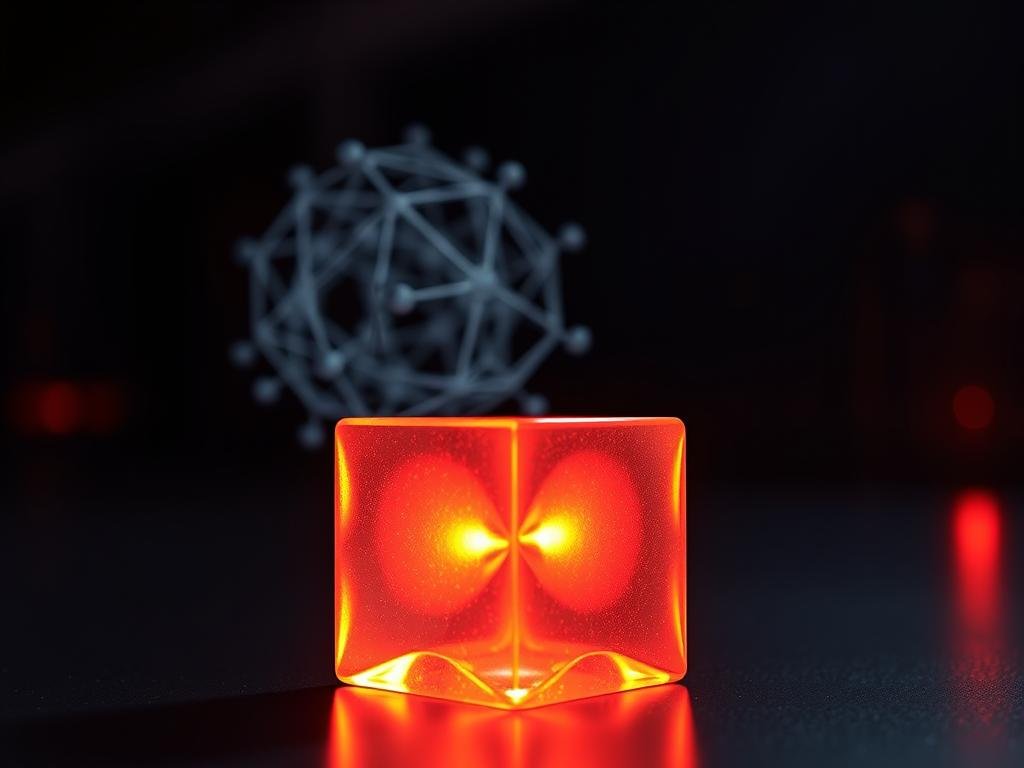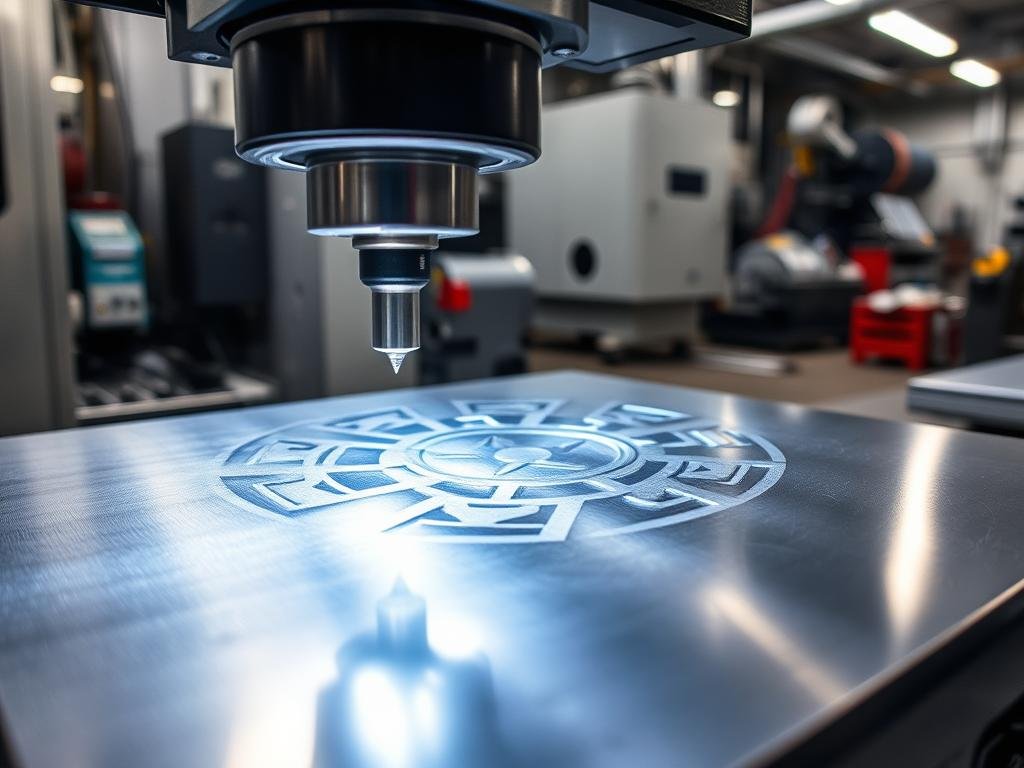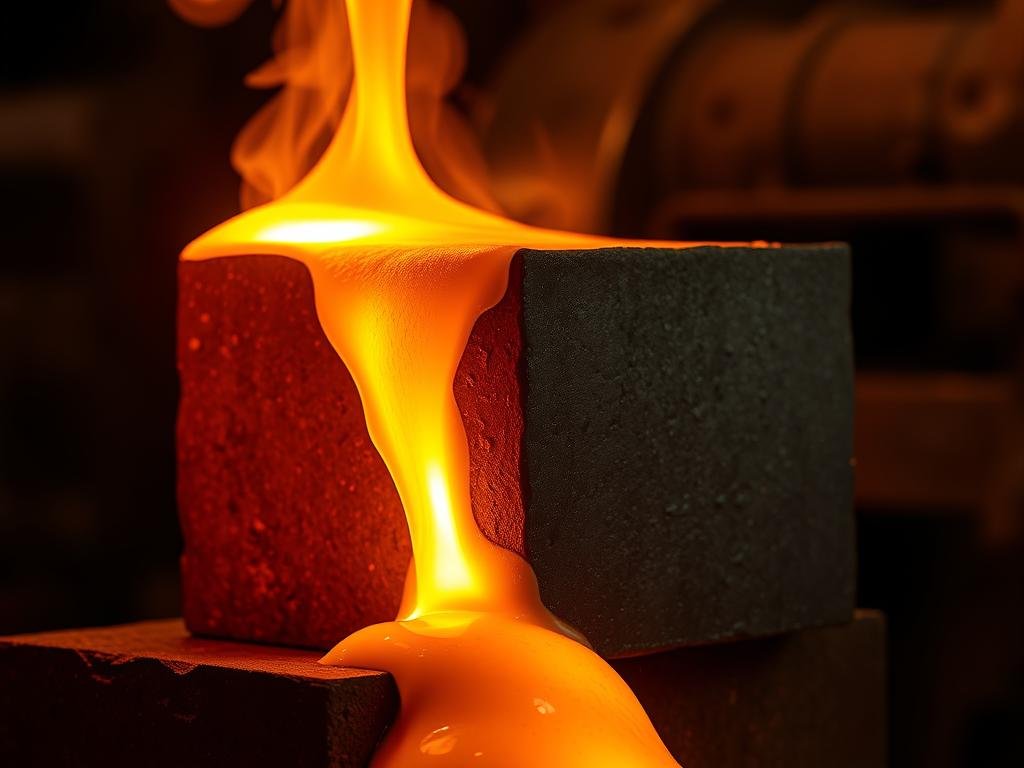Only a handful of metals survive 3,422°C (6,192°F; 3,695 K), yet this single fact drives design choices across aerospace, energy, and electronics.
Tungsten has the highest melting point among common metals. Its density near 19.254 g/cm3 and body-centered cubic crystal make it stable at extreme temperature and under heavy loads.
Engineers use that high melting behavior to pick materials for parts that must not soften during production or service. Rapidaccu brings 15+ years of CNC machining and manufacturing to turn those properties into precise prototypes and production pieces.
This guide will cover key facts in clear terms: the numeric thresholds, how service temperature differs from a true melting figure, and why purity, pressure, and geometry change outcomes.
Expect practical notes on process planning, heat flow related to size and section thickness, and comparisons to other metals so you can match cost, weight, and performance.
The short answer and why it matters in manufacturing
When service temperatures push beyond normal limits, engineers pick materials that resist softening and keep tight tolerances. Rapidaccu’s 15+ years in precision CNC machining help turn those choices into repeatable parts with fine surface finish for both prototypes and production.
Exact values for design and process windows
Melts at 3422°C (6192°F; 3695 K) and boils near 5930°C (10706°F; 6203 K). Use these numbers for thermal budget and fixture design.
How extreme heat changes design and processing
- High melting materials widen thermal budgets for brazing, sintering, and vacuum runs.
- Parts gain creep resistance and dimensional stability, helping long-term performance in aerospace and electronics.
- Machining demands tight control of heat at the tool-workpiece interface; EDM, grinding, or hybrid routes often replace bulk melting.
- Alloy selection can lower processing temperature while balancing density and wear resistance.
| Property | W (°C) | Mo (°C) | Fe (°C) |
|---|---|---|---|
| Melting | 3422 | 2623 | 1538 |
| Boiling | 5930 | 4639 | 2862 |
| Typical uses | aerospace, energy, electronics | high-temp alloys, tooling | structural, castings |
whats is the tungsten melting point
Knowing a material’s phase-change temperature guides decisions for fixtures, heat input, and safety factors.
For design use, tungsten melts at 3422°C (6192°F; 3695 K). This numeric value is the standard reference for thermal budgets, prints, and certifications.
Pure tungsten shows the highest melting among common metals. Nonmetal elements such as carbon behave differently; carbon sublimes at ambient pressure rather than forming a liquid.
Atomic structure and strong metal–metal bonding make this behavior predictable. That structure gives high density and thermal stability, which affect part mass and how heat travels through a section.
- Reference melting values alongside service temperature limits and safety margins.
- Specify units (°C, °F, K) clearly on drawings and certificates.
- Confirm purity when exact phase thresholds are required; alloys change the value.
| Parameter | Value | Design impact |
|---|---|---|
| Numeric value | 3422°C / 6192°F / 3695 K | Sets thermal budget and joining limits |
| Material class | Pure metal (BCC) | High density, slow thermal response |
| Purity effect | Alloying lowers threshold | Choose pure tungsten for exact spec; use alloys for processing ease |
Work with Rapidaccu early to verify material data on drawings and manage risk in critical builds.
Why tungsten has the highest melting point among metals
At an atomic level, unusually strong interatomic forces and a stable lattice explain why this metal stays solid at extreme heat.
Strong bonding and energy to break W–W interactions
Five d electrons add covalent character to metallic bonds. That mix raises the energy required to separate atoms.
High nuclear charge further pulls electrons inward, increasing bond strength and raising the temperature at which phases change.

Body-centered cubic crystal and thermal stability
The BCC lattice resists lattice collapse as temperature rises. No structural phase shift up to very high pressure reinforces stability.
Electron configuration and nuclear effects
Dense electron clouds from 5d orbitals improve cohesion and slow lattice vibration growth as heat is added.
- Contrast with carbon: it sublimes instead of forming a liquid under normal pressure.
- High bond strength means tougher machining: higher forces and faster tool wear.
- Rapidaccu aligns tooling, coolant, and vacuum or inert atmospheres to protect material properties during process.
| Factor | Effect | Manufacturing note |
|---|---|---|
| Bond energy | Raises phase-change temperature | Requires high-energy joining methods |
| Crystal form | Maintains lattice at high temperature | Stability aids long-term performance |
| Density | Stores heat, affects conduction | Adjust cycle times and fixtures |
What shifts tungsten’s melting behavior: purity, pressure, and atmosphere
Minor changes in chemistry or environment can move phase thresholds and change how parts behave under heat.
Purity plays a major role. Adding elements disturbs the crystal lattice and usually lowers the melting value. Trace content of carbon, iron, or nickel can alter hot hardness and weldability.
High pressure gives a modest rise in temperature for phase change by compacting the lattice. For most shop runs this effect is small, but it matters in research or extreme compaction processes.
Oxygen and reactive gases cause oxide scales at elevated temperature. That drives use of vacuum, argon, or helium to protect surfaces and keep dimensions tight.
- Shop conditions often have residual oxygen and humidity; lab runs control dew point and leaks.
- Choose vacuum when surfaces must stay pristine; use argon or helium for cost-sensitive shielding on complex parts.
- Follow purge cycles, dew point checks, and slow ramp rates to avoid surface reactions and distortion.
| Condition | Effect on phase | Manufacturing action |
|---|---|---|
| High purity | Maintains published point | Spec pure material; strict QC |
| Alloy additions | Lowers threshold; alters properties | Balance processability and performance |
| High pressure | Slightly raised temperature | Consider only for specialized runs |
| Reactive atmosphere | Oxidation, contamination | Use vacuum or inert gas shielding |
Rapidaccu advises on material selection and atmosphere controls to deliver consistent, high-spec parts for precision builds.
How tungsten compares with other high-melting metals and materials
When designs demand reliable performance above 2000°C, designers compare a small family of high-temperature metals for trade-offs in mass, cost, and finish.
Tungsten vs molybdenum, tantalum, rhenium, and platinum
Here is a concise comparison of melting values and core traits. Tungsten leads with 3422°C and highest density near 19.25 g/cm3. Rhenium follows at 3180°C, tantalum at 2966°C, molybdenum at 2623°C, and platinum at 1768°C.
High density helps radiation shielding and inertia but raises part mass and cost. Molybdenum offers lower density and easier fabrication, while rhenium and tantalum serve niche, high-cost roles where chemical resistance or ductility matter.
Refractory metal definition and selection notes
Refractory metal denotes elements with very high phase thresholds and thermal stability. Tungsten exemplifies this class by topping the list on temperature and stability.
- Oxidation: some require vacuum or coatings at service temps.
- Workability: higher melting often means tougher machining and special joining.
- Thermal flow: conductivity and specific heat change how heat spreads during processing.
| Metal | Melting (°C) | Density (g/cm³) | Notes |
|---|---|---|---|
| Tungsten | 3422 | 19.25 | Highest temperature; heavy; good for shielding |
| Molybdenum | 2623 | 10.2 | Lighter, easier to machine; lower temp limit |
| Tantalum / Rhenium | 2966 / 3180 | 16.6 / 21.0 | Specialty uses; costly; strong corrosion resistance |
| Platinum | 1768 | 21.45 | Noble metal; lower temp; excellent corrosion resistance |
Note that carbon sublimes rather than liquefies at ambient pressure, so compare carefully when metals and nonmetals are in play.
Rapidaccu helps teams down-select materials by weighing temperature limits, density, oxidation behavior, and finish options. For detailed specs see our melting point reference.
Tungsten alloys and their melting points: from W-Cu to W-Ni-Fe
Blending tungsten with other elements lowers high-temperature thresholds and adds traits that help manufacturing and service life.
Common alloy systems and typical ranges
Typical mixes include W‑Cu (~2500°C), W‑Bi (~2400°C), W‑Ni‑Fe (2800–3100°C), W‑Mo (~3000°C), and W‑Ta (~3000°C). These ranges guide joining choices, sintering schedules, and heat treatment.
- W‑Cu improves thermal management and machinability while lowering the melting point.
- W‑Ni‑Fe heavy alloys give high density and ductility for counterweights and shielding.
- W‑Mo and W‑Ta systems keep elevated temperature stability when pure material is hard to process.
- Binder content and microstructure affect wear resistance and hot erosion behavior.
| Alloy | Typical range (°C) | Manufacturing note |
|---|---|---|
| W‑Cu | ~2500 | Good thermal paths; infiltration used |
| W‑Ni‑Fe | 2800–3100 | Heavy parts; sinter & HIP routes |
| W‑Mo / W‑Ta | ~3000 | Higher temp stability; harder to machine |
Size and geometry affect homogeneity and porosity risk; acid or chemical exposure needs alloy-specific checks. Rapidaccu helps select alloys and processing paths to balance density, resistance, cost, and throughput for both prototypes and production.
Processing and melting tungsten: equipment, methods, and safeguards
Precision processing of refractory metals calls for focused energy, strict gas control, and rugged equipment designed for extreme temperatures.
Arc and vacuum melting
Arc and vacuum furnaces deliver very high energy density. Operators run these systems in vacuum or with argon/helium to limit oxygen and contamination.
Vacuum arc melting yields uniform chemistry. It suits billets and ingots before further forming or sintering.
Laser and localized energy
Laser melting concentrates heat in small zones. That enables fine features with minimal heat-affected areas and faster cycle times for prototype work.
Induction, resistive heating, and hydrogen reduction
Induction provides rapid, controlled heating for larger parts. Resistive systems give steady, uniform ramps for sintering or consolidation.
Hydrogen reduction removes oxide films before consolidation, improving join quality and final density.
- Equipment needs: vacuum integrity, thermal shielding, and refractory-lined chambers.
- Atmosphere control: gas purity, flow rate, and oxygen monitors to avoid scale.
- Controls: precise temperature sensors and ramp programs for repeatability.
- Safety: thermal barriers, interlocks, and trained operators for high-energy systems.
| Method | Atmosphere | Energy style | Production fit |
|---|---|---|---|
| Arc / Vacuum | Vacuum / argon | High-density arc | Ingot/billet production |
| Laser melting | Inert gas | Focused photon | Precision, low-volume parts |
| Induction / Resistive | Controlled inert | Electromagnetic / ohmic | Scalable production |
| Hydrogen reduction | H2 atmosphere | Reducing chemistry | Surface cleaning before consolidation |
Rapidaccu applies validated process controls and equipment selection to meet production goals for accuracy, finish, and throughput while guarding against oxidation and contamination.
Applications enabled by tungsten’s high temperature performance
High-temp performance unlocks part uses that other metals cannot sustain under prolonged thermal stress.
Aerospace use cases
Rocket nozzles, reentry shells, and hot-structure hardware need materials that keep shape under severe thermal flux. These aerospace components must resist creep and retain strength during repeated cycles.
Rapidaccu produces precision parts for hot sections, scaling from prototype to production with tight tolerances and fine finishes.
Electronics and energy
Filaments, electrodes, and X-ray targets depend on stable thermal and electrical behavior. High density and thermal conductivity deliver predictable performance in service.
Medical and industrial systems also use dense metal for radiation shielding where mass aids attenuation.
Metal processing and defense
Cutting tools, molds, and penetrators need hardness and heat resistance during extreme contact and abrasion. Alloys help tune toughness while preserving high-temperature resistance.
- Design geometry, wall thickness, and cooling schemes dictate part life and efficiency.
- Reactive environments—acid or oxidizing atmospheres—require coatings, inert gas, or vacuum to avoid rapid degradation.
- Final size, tolerances, and surface finish strongly affect service life and repeatability.
| Application | Primary benefit | Rapidaccu capability |
|---|---|---|
| Aerospace hot sections | Shape retention under thermal flux | Precision CNC, vacuum handling |
| Electronics & X-ray targets | Stable emission and shielding | Fine finish, tight tolerances |
| Tooling & defense | Heat and wear resistance | Alloy selection, hardening |
When failure would be catastrophic, early DFM and DFA help balance performance and production cost. Contact Rapidaccu to align materials, process, and inspection plans for reliable, repeatable results.
Design and CNC machining implications for engineers
Designing parts for extreme service calls for clear choices about material, geometry, and process capability.
Material selection: pure tungsten vs tungsten carbides and molybdenum
Choose pure tungsten when maximum temperature resistance and density matter. Use tungsten carbides for wear resistance and easier machining when full high temperature duty is not required.
Molybdenum offers a middle ground: good high temperature strength with lower density and simpler processing for many production runs.

How Rapidaccu machines high-temperature metals for prototypes and production
Rapidaccu leverages 15+ years of CNC experience and robust equipment to manage dense, hard materials. Rigid workholding, diamond or coated tooling, and controlled coolant strategies limit heat buildup and tool wear.
Tolerance control uses staged roughing, low-heat finishing, and in-process inspection. EDM and grinding address tight features while minimizing distortion for predictable production outcomes.
- Design for manufacture: simplify sharp corners, control wall thickness and size to reduce stress concentration.
- Chemical exposure: specify coatings or post-treatments when acid or oxidizing media apply.
- Documentation: material certs, inspection reports, and traceability accompany prototype and production batches.
| Decision | When to choose | Rapidaccu note |
|---|---|---|
| Pure tungsten | Max temperature, high density | Sinter then finish; strict QC |
| Tungsten carbide | Wear resistance, easier finish | Conventional CNC with coated tools |
| Molybdenum | Balance of temp and machinability | Lower cost production fit |
Conclusion
Good results come from pairing material properties with process controls to manage extremely high heat. Tungsten holds a numeric reference at 3422°C (6192°F; 3695 K), giving top thermal stability among common metals.
Strong bonding, a body-centered cubic lattice, and high density explain that advantage. Purity, alloying, pressure, and gas environment shift melting behavior and available process windows.
Compare metals for mass, cost, and finish when choosing for aerospace, energy, electronics, tooling, or defense applications. Watch heat flow, oxidation risk, and dimensional control during machining and joining.
Rapidaccu stands ready to help you design, prototype, and produce high-temperature parts with 15+ years of machining expertise. Contact us for DFM support, cost and lead-time optimization, and production alignment to your operating conditions.

